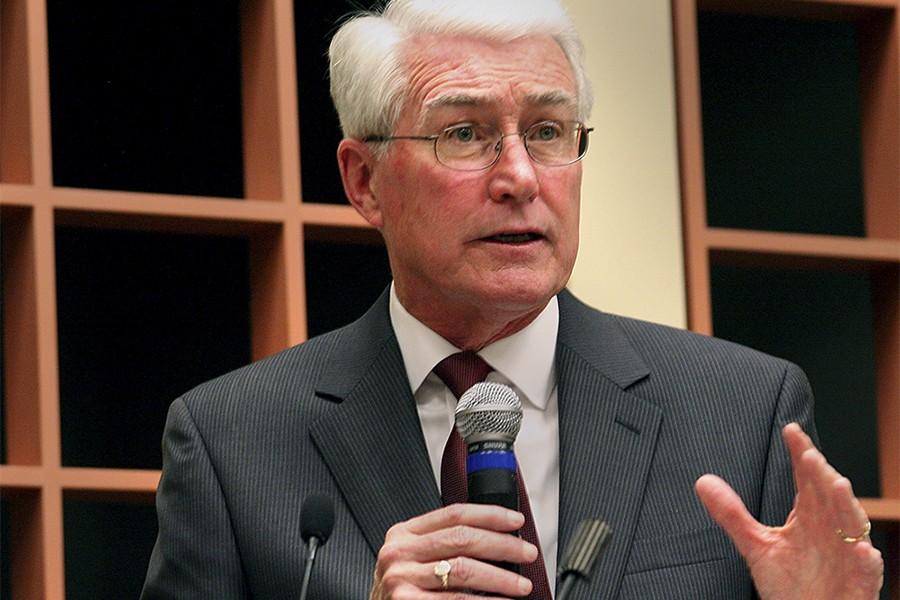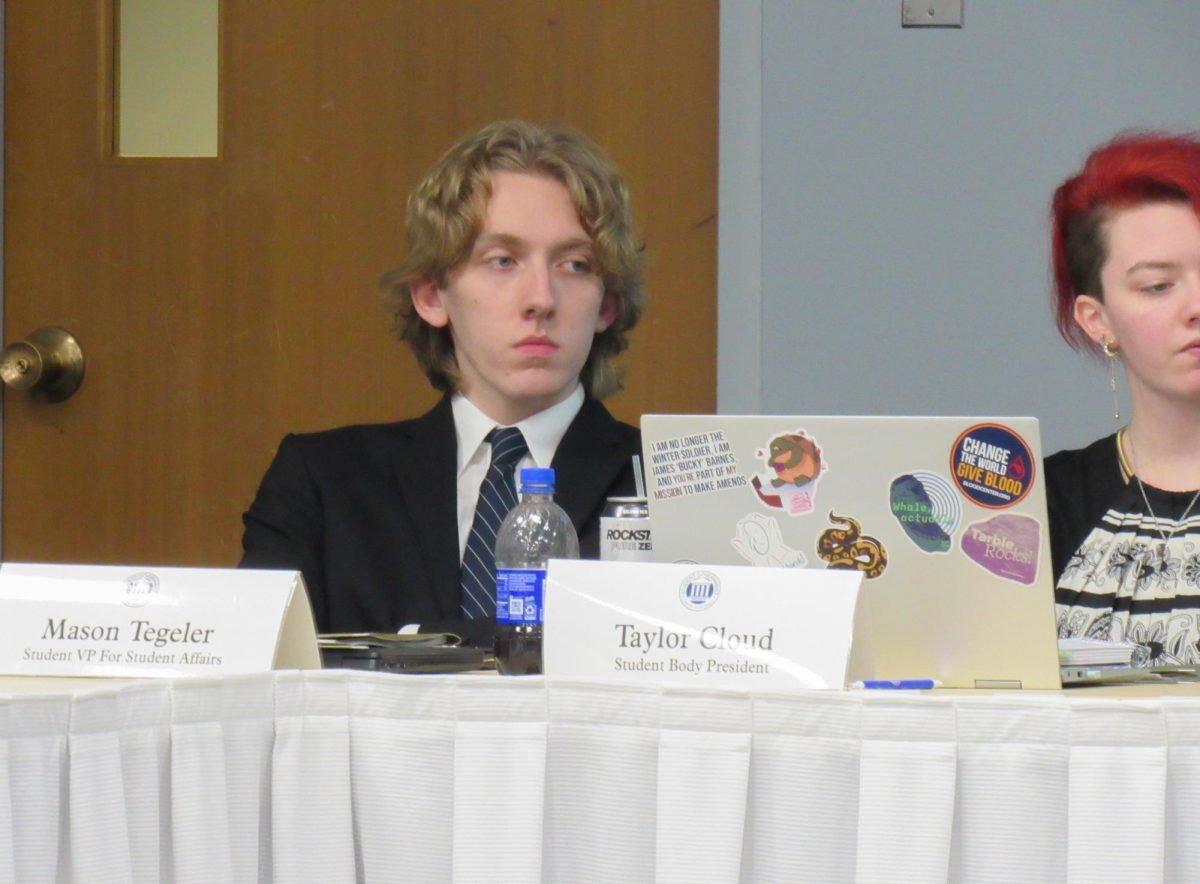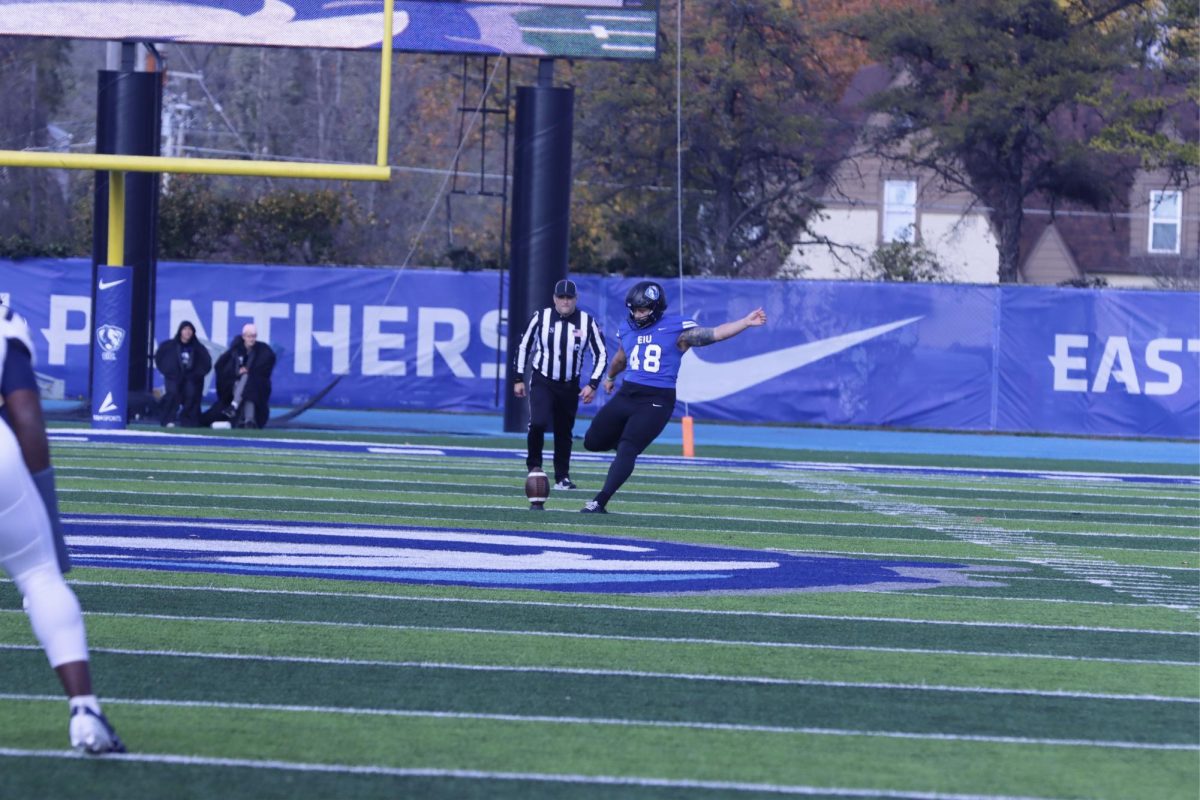1960s pop, jazz film scores put on display
November 12, 2014
As Booth Library’s “Revolutionary Decade: Reflections on the 1960s” semester-long exhibit winds down, several professors delved into the influence of different genres of music throughout the 1960s.
Throughout Wednesday’s presentation in the Witter’s Conference Room of Booth Library, professors explored how music in different capacities still influences the world today.
Jazz: Divergence of Styles
It took Andrew Cheetham, a trumpet professor, back to his academic roots to discover that jazz branched off into four different sections throughout the 1960s.
Jazz never really conformed to the certain precedents set by music, and in the 1960s era, it was taken to a whole new level, as it divided itself into four areas: straight-ahead, free jazz, avant-garde and jazz-rock fusion.
Of course the evolution began in the 1950s, as it was considered pop music until then, Cheetham said.
It was there that jazz musicians took an interest in music for music’s sake, he added.
As a mirror against the society it evolved with, jazz in the 1960s tended to set the trend in the realm of liberalism.
Works by Charles Mingus showed this trend, Cheetham said.
Mingus, a bassist, used the trend with works such as “Freedom” and “Fables of Faubus.” Opening the piece “Freedom,” the audience hears the sounds of chains moving against the ground, reminiscent of slaves in chains.
As the song progresses, it turns to be an evolution of the Civil Rights movement throughout the 1960s.
Likewise, Mingus also used jazz music to make a statement about Arkansas governor Orval E. Faubus who sent in the National Guard in 1957 in a move to prevent nine African-American children from being integrated into the Little Rock Central High School.
Cheetham said this wave of music by Mingus solidified him as a political activist within the 1960s.
Cheetham also said Duke Ellington inspired Mingus’ playing styles, with Mingus copying Ellington having his brass players play with plungers, the alto style reminiscent of Johnny Hodges, who in turn inspired Ellington and Mingus would use the same style of improvisation as Ellington.
The effects of non-European approaches also began to take hold within that era, which in turn lead to the interest in “World Music.”
Cheetham said the evolution of jazz has stayed consistent since the 1960s, with the last trend becoming the latest.
Telstar Sixties: Global Influence on American Pop
Newton Key remembers the first pop music album he ever received. When he was 8 years old he got his hands on a copy of the Beatles’ “Second Album.”
“It was 26 minutes of pure pop,” he said, smiling.
And as the history professor grew up during the 1960s, he remembers having a continual love-hate relationship with pop music.
But still the draw to pop music was there. Key remembers spending his days riding his bike to get different pop charts in 1969.
“I probably had a serious deficit in my social circle,” he said, laughing.
But the birth of pop music came during 1958-1962, when rock ‘n’ roll died.
Key said some scholars pinpoint the specific day as Feb. 3, 1959 when a plane crash killed Buddy Holly, Ritchie Valens and J.P. “The Big Bopper” Richardson.
And from the ashes, pop music rose.
But looking at the globalization influence of pop music, nobody would believe a song about a communication satellite would take the top spot on the Billboard charts.
But that’s exactly what the Tornados’ “Telstar” did in 1962. A song from a British band, it let people embrace the future, Key said.
It was also relatable. Key said the “cheesy,” almost as if it were made in a basement sound, helped people believe that they could do it too.
And the globalization became clear when an American version put vocals to it, and it was redubbed in Spanish and German.
Likewise, Soeur Sourire, or “The Singing Nun,” produced a song called “Dominique” in 1963.
The catchy tune helped propel the song to the top spots of the Billboard charts, Key said.
As The Singing Nun became popular oversees, she began singing songs about more controversial topics. “The Golden Pill,” a song advocating the use of birth control, was one song that lead her to be excommunicated from the church.
Other artists such as Kyu Sakamoto, with the song “Sukiyaki” in 1963 and Millie Small with “My Boy Lollipop” in 1964 helped expand borders into America.
But still, the British Invasion prevailed, and on April 4, 1964, the top five songs on the Billboard Hot 100 Chart were all songs by The Beatles.
Key compared the globalization of pop music during this time to the Spaghetti Western era of films. When Italian films began getting money poured into their productions that all featured “a lot of shooting and more staring,” other film companies exported the idea.
“The same was for The Beatles,” he said. “The combo of double bassists and drums were exported all over the place.”
Influential British film scores of the 1960s
British films also took the world by storm in the 1960s, with five of the 10 winners of that decade’s Academy Awards going to British films, such as “Lawrence of Arabia” and “A Man for All Seasons.”
Jemmie Robertson, a music professor, said he would focus on “mind-blowing sci-fi” for his portion of the presentation, which centered heavily on Stanley Kubric’s 1968 film, “2001: A Space Odyssey.”
Robertson went through the musical history and controversy surrounding the film. Kubric had a “Temp” Score ready while commissioned composer Alexander North worked on the real score. However, Kubric loved the “Temp” Score so much, he discarded North’s.
Robertson then played the opening scene to “2001: A Space Odyssey,” dubbed with North’s original composition and then the score used in the film so the audience could hear the difference.
Robertson said people needed to look at the 1970s and 1980s to see the influence that music played.
Films such as “Star Wars,” which didn’t use a “Temp” Score, but was composed by John Williams, featured heavily from Kubric’s film.
While technical difficulties plagued Robertson’s presentation, he was still able to have a discussion about the role music played in film series like James Bond.
Booth Library’s exhibit will continue with “A Phoenix Rising: American Indian Activism in the 1960s” at 4 p.m. Nov. 20 in the Witter’s Conference Room of the library, Room 4400.
Bob Galuski can be reached at 581-2812 or deneic@gmail.com.

































































